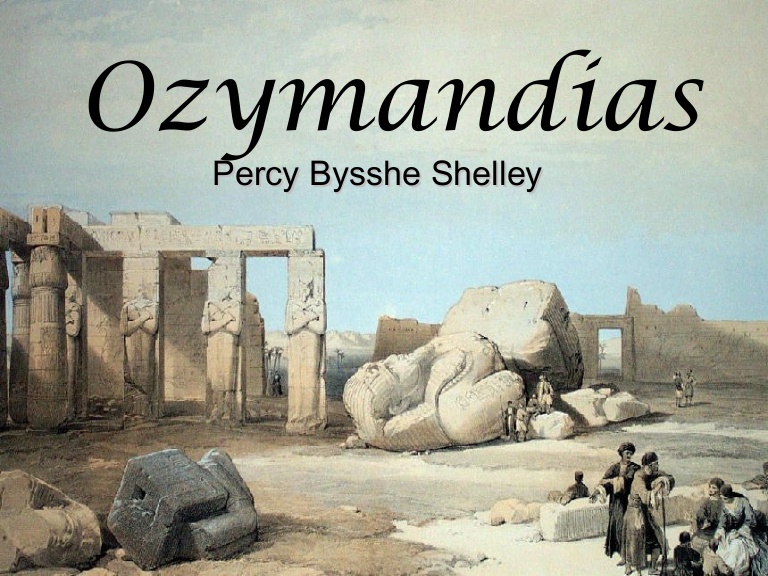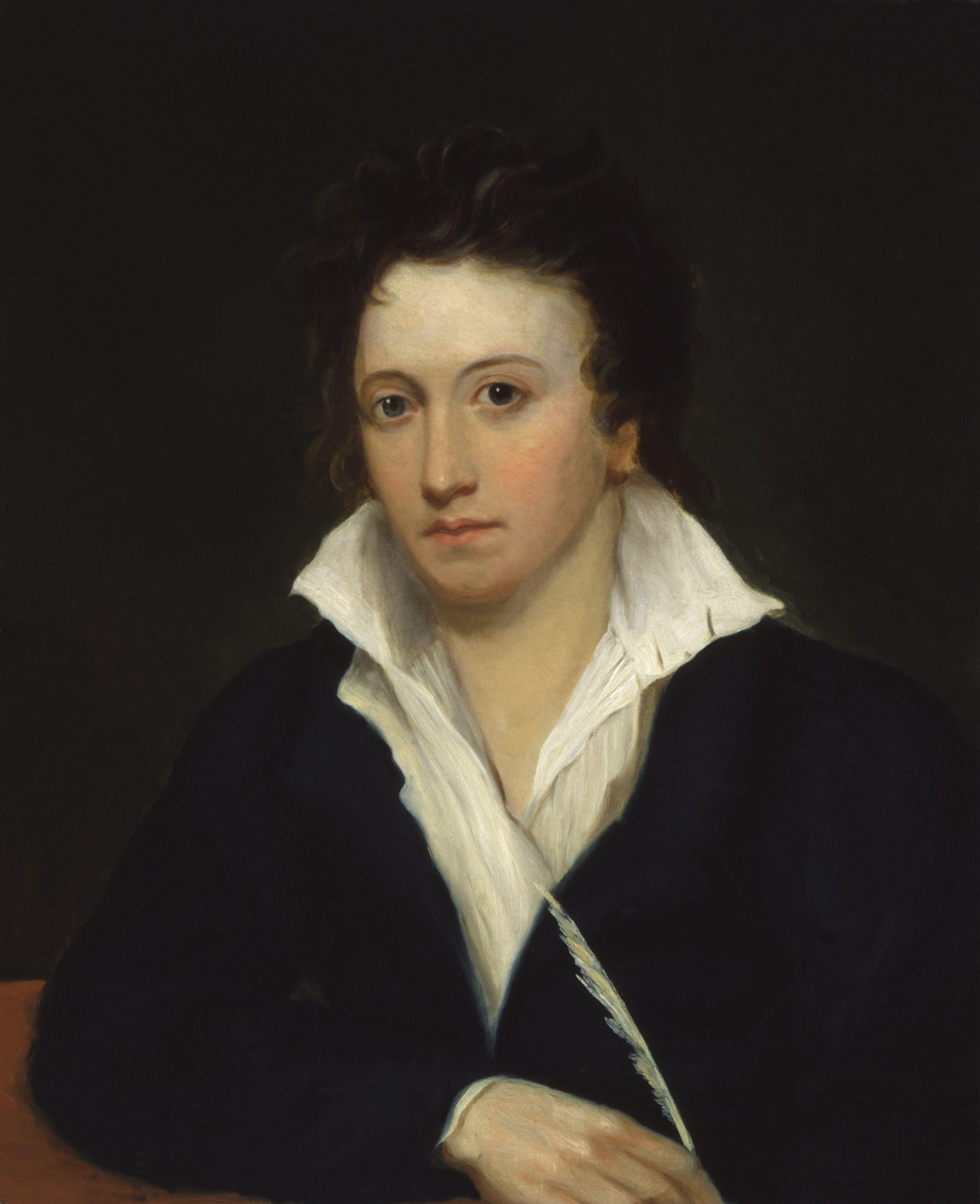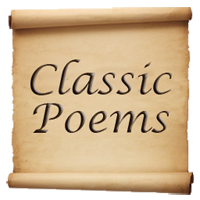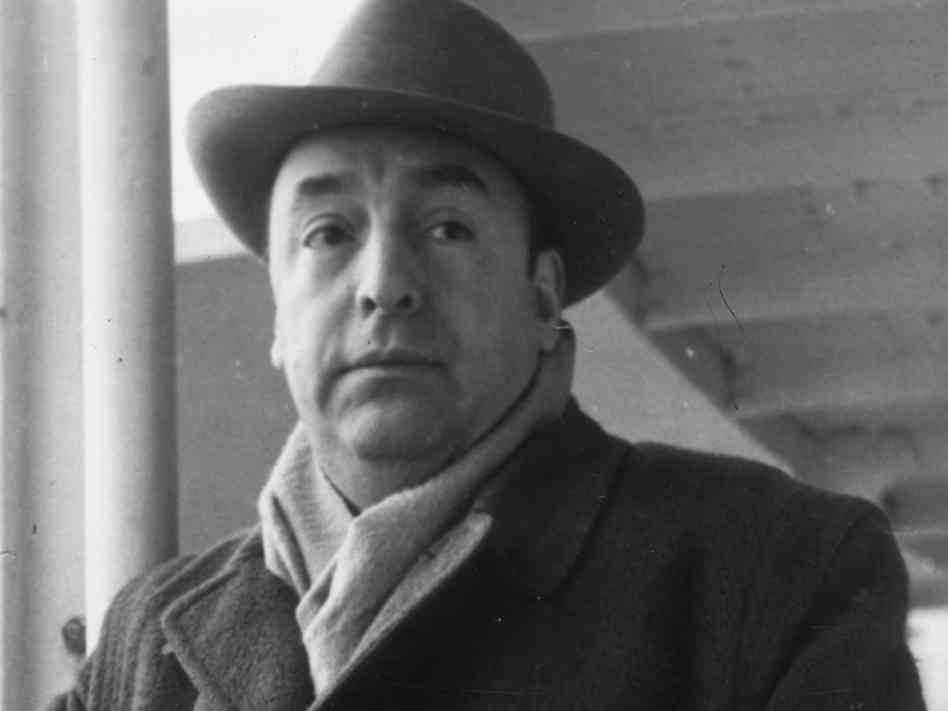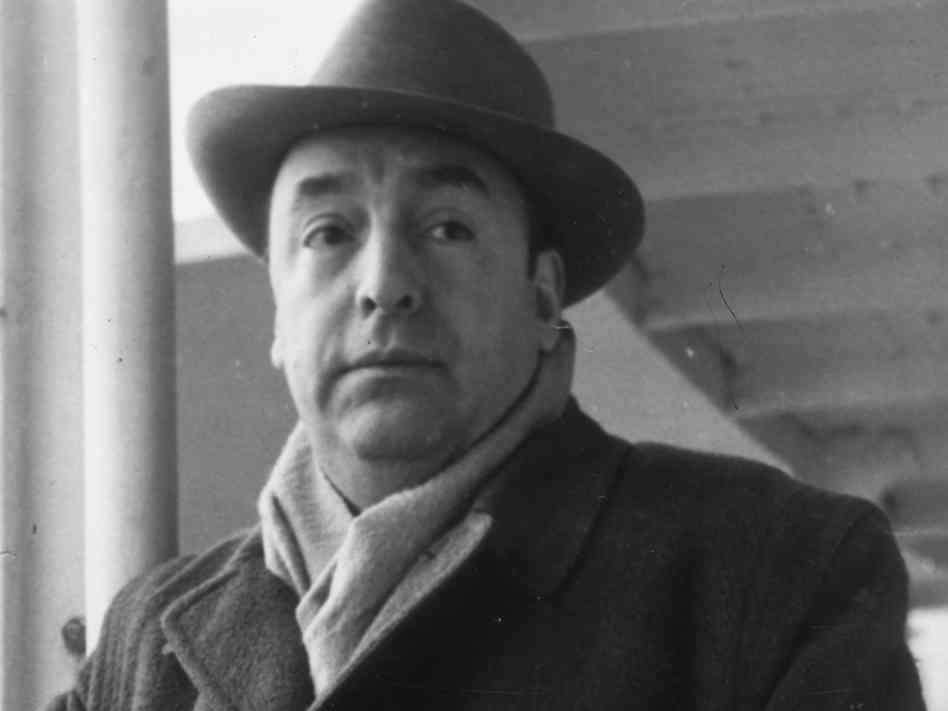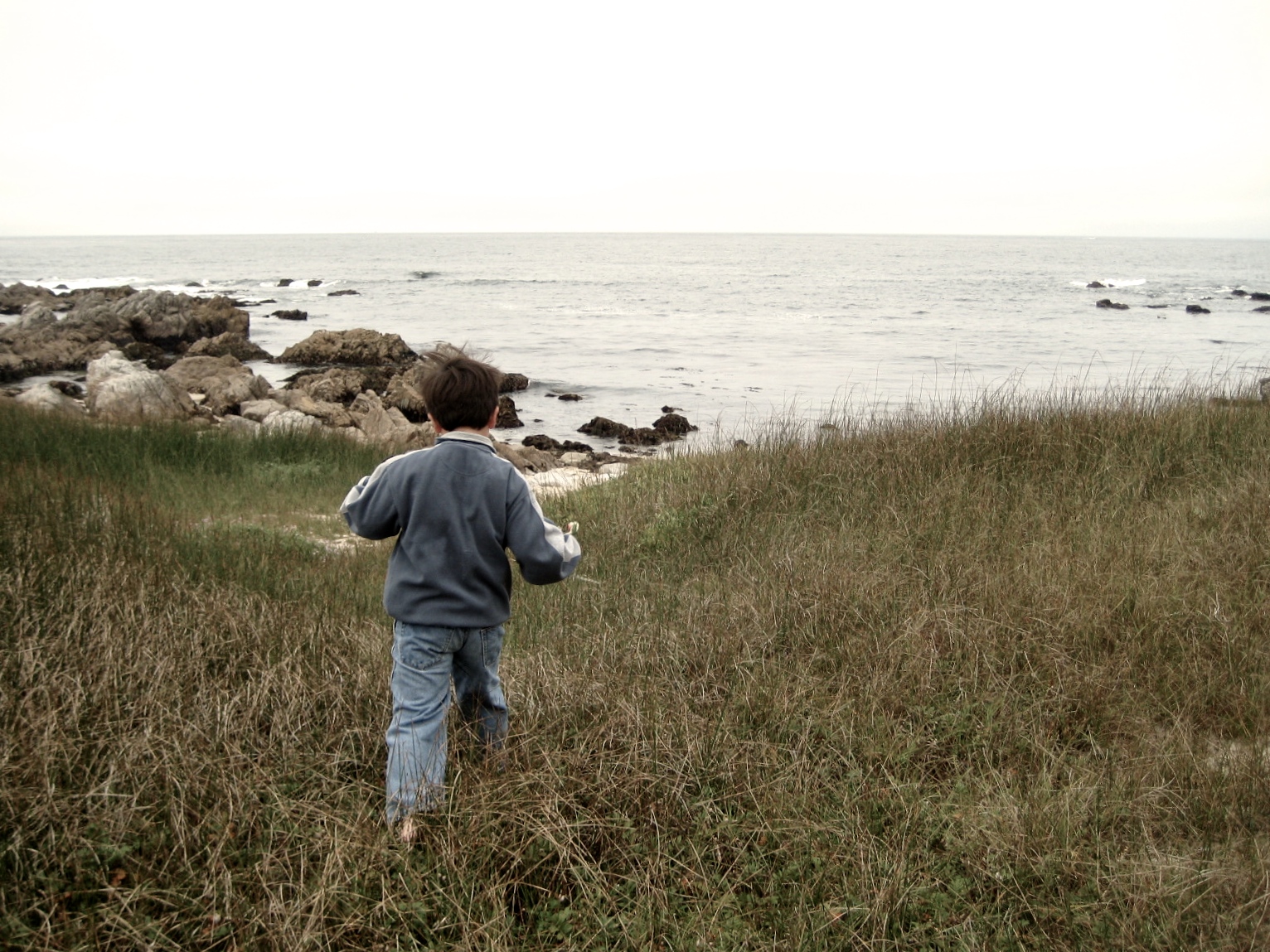Introduction to Ozymandias:
The great sonnet was published on 11th January 1818 on page 24 of number 524 of Leigh Hunt’s ‘The Examiner’. It had apparently been written barely two weeks earlier. The occasion of its composition is now well known. At his house near Marlowe on Saturday 27 December 1817, the day after Boxing Day, Shelley entertained Horace Smith (1779-1849), whom he had met at Leigh Hunt’s the previous year. Smith was equally talented as a financier, a verse parodist, and an author of historical novels. The talk seems to have drifted around to Egyptian antiquity and to Diodorus Siculus, whose arrogant epitaph ascribed to Ozymandias “had become virtually a commonplace in the romantic period;” and a friendly competition ensued in which each writer was to produce a sonnet on the subject of “Ozymandias, the King of Kings.”
Critical Analysis of Ozymandias:
In the case of Shelley’s “Ozymandias” the fact that the poem has nothing to do with the poet/speaker’s personal physical experience is announced by the first line, which tells us explicitly that the person who had the fictive experience that the poem uses as its central metaphor was not the poet-speaker at all, but “a traveller. The name Ozymandias is a Greek rendition of “User-macat-rec,” the first element in the praenomen or throne name of the ancient Egyptian king now usually known instead by his Ra-name as Ramesses II (1279-1212 B.C.). His mortuary temple was definitively identified at long last by Jean Franqois Champollion (1790-1832) in 1829. It has been known since as the Ramesseum, and of course still, stands on the West Bank at Luxor. The career of this great king, however, was utterly unknown in Shelley’s day. Even the name Ramesses would have been recognized only by readers of the Bible and then only as the Hebrew name of an Egyptian city mentioned in Genesis 47.11 and Exodus 1.11, not as the name of a king. Like all his contemporaries,
Shelley thus possessed nothing that approaches an ordinary twenty first-century schoolboy’s knowledge of the pharaoh who had boasted the throne name ”cUser-macat-rec” three millennia before. At no time before he wrote the sonnet could Shelley possibly have seen any sculptured head comparable to the one his fictional traveler describes unless he had actually gone to Egypt. In common with all the other English Romantic poets, however, either major and minor, Shelley never set foot in the Land of the Pharaohs, though many of his non-literary contemporaries did so. Nor is there any record, indeed, of his ever even contemplating such a visit. It is therefore quite impossible that “Ozymandias” could have been inspired by any first-hand experience of the poet’s involving either its Egyptian setting or a fortiori any decayed colossal sculpture within that setting. There is abundant evidence, in fact, that inspirations for his Egyptian or quasi-Egyptian allusions not only in this sonnet but also in other works were entirely and exclusively literary.
The two most crucial lines of the sonnet and the name Ozymandias were borrowed from a well-known ancient Greek source, Diodorus Siculus. Among Shelley’s other literary sources, the most obvious are works that were virtually contemporary: Volney’s Voyage en Syrie et en Egypte, pendant les annees. Vivant Denon’s Voyage dans la Basse et la Haute Egypte, which appeared in 1802, when Shelley was 10 and became, next perhaps to Lane’s Manners and Customs, the most popular and successful book of Egyptology ever published, a staple of any well-furnished gentleman’s library throughout the Romantic era. A fourth possible source is Richard Pococke’s extraordinary Description of the East and a fifth is the celebrated Description de i’E- gypte (1809 [1810]-1829), several volumes of which were already circulating among well-heeled enthusiasts in England.
Shelley obviously either had no idea what Belzoni’s prize looked like, moreover, or found the information irrelevant when he wrote his poem. His fictional statue has a “wrinkled lip and sneer of cold command,” for example, whereas Belzoni described the real head as “smiling upon me, at the thought of being taken away to England.” The head of Ozymandias in the Description de V’Egypte, which Shelley also might well have seen, shows the same benignly smiling countenance Belzoni describes-though probably at that point in time delighted with the idea of being taken away to France, rather than England-likewise utterly unlike the depiction Shelley describes in his poem. “Ozymandias” had been the result of a light-hearted sonnet-writing contest arising out of this enthusiasm.
That Shelley was interested in ancient Egypt had been clearly announced years earlier in his first major poem, the lengthy verse narrative Alastor. It is the words that Diodorus says were inscribed on the statue that is in any case ironically paraphrased in Shelley’s sonnet as lines 10 and 11: “My name is Ozymandias, king of kings:/Look on my works, ye Mighty, and despair.” Shelley’s version transforms the pharaoh’s declaration from the triumphant boast of a successful despot into a commentary on the transitory nature of all earthly power. The sonnet says nothing about any temple or temple entrance, however, not even in ruins, and in fact, the poet creates a natural setting altogether different from the ancient building described by Diodorus: a bleak featureless desert landscape where “lone and level sands stretch far away.” This setting is vital to the poem since its theme or meaning requires that it evoke for us a place in which, apart from the portrait statue of the tyrant, all other physical evidence of an empire shall have disappeared without a trace.
Pulling together as it does several long-established cultural postures and attitudes and knitting them neatly into the political ethos of the Revolution, Ruins of Empires answered brilliantly a felt intellectual need and enjoyed a well-deserved Europe-wide vogue lasting at least four decades. It was central to the evolution of Romanticism from a specifically English and insular aesthetic attitude to a universal political and philosophical force. The principles Volney saw expressed in ruins were thus to re-emerge a quarter of a century later not only in poems like “Ozymandias,” but in all the best of Shelley’s work.
It would obviously be a mistake to interpret Shelley’s poem as a sort of miniature travelogue, much less as some kind of anachronistic attestation to the glory of Ramesses II: that monarch’s current celebrity is not even a direct inheritance from ancient times, but a recent confection based on the intelligence, self-sacrifice, persistence, and hard work expended by a host of Egyptologists during merely the past 175 years. Nor is the poem a “claim for the power of art to survive the ruins of empire,” as has recently been suggested by Nigel Leask in his wide-ranging study of travel writing during the Romantic era. Leask’s assertion that Shelley’s Defense of Poetry celebrates “the transhistorical, Platonic power of art … as at once the harbinger and guarantee of political liberty” is not only not supported by the text of the Defense, but is actually contradicted by it. Nowhere in any of his writings, indeed, does Shelley make such a claim for art, least of all in “Ozymandias” where it is clear that the survival of chunks of the colossal portrait statue of an ancient tyrant has been purely accidental. That fact, indeed, is part of the point of the whole poem. The chief principle or vision enunciated in the Defense and elsewhere in Shelley, moreover, is not “aesthetic” or “Platonic,” but ethical and evolutionary. It is a vision concerned wholly with real life and its conduct in the world as it is. The chief elements of this vision were by no means uncommon or peculiar to Shelley alone, moreover, but were recognized by him and others as being shared with many of his contemporaries exemplified and enunciated certainly in “Ozymandias.”
In Shelley’s Volneyan and evolutionary view of history, all empires are foredoomed to disappear and for a work of what we call art merely to have outlived one of them hardly signifies anything. If that work is merely a portrait of a tyrant, moreover, the value one places upon it like the value one places on propaganda or Kitsch- may well be largely ironical, the irony being present or absent precisely to the degree that the tyranny it was originally supposed to memorialize is in fact remembered at all. “Ozymandias” is thus a political poem, a fact that should be clear not only from the text itself but from the kinds of things that “inspired” it: no physical experience except the reading of many other texts, which had little to do with physical experience themselves and nothing at all to do with neo-Platonic philosophy. These texts, in turn, were merely a small portion of the poet’s wide reading over many years, which had given him a thorough knowledge, most importantly for this poem, of the multitudinous metaphors, living and dead that were available to figure in contemporary political thinking. And above all, no doubt, what always echoed in his mind were the political sonnets of Wordsworth, published ten years earlier, and of Milton. “”Ozymandias” is not, in other words, the result of “inspiration” by a particular physical experience, nor of some special realization or revelation arising out of a physical experience. To point out this truth is to run counter, of course, to a great many vulgar myths about art and artists. In old-fashioned Hollywood movies, for example, a sexual or quasi-sexual epiphany used to figure as the automatic explanation for virtually any creative act. But “Ozymandias” is certainly not an erotic celebration. Neither is it a poem about “nature.” Nor is it is in any way about “art.” It has even less to tell us about nature, love, or art, indeed, than it does about ancient Egypt. What it seeks to remind its readers, instead, is that no tyrannical power lasts forever, no matter how efficient its repressive apparatus or how deep its degree of self-deceit. And if in Shelley’s day the means of tyranny available to governments were nugatory compared with the massed might that can be casually mustered by the powers-that-be in our own democratic age – an era when elected governments outdo any ancient monarchy in callousness and cruelty, in hypocrisy and mendacity, in globalized rapacity and greed-“Ozymandias” may well have more pith and relevance than ever before.
Some online learning platforms provide certifications, while others are designed to simply grow your skills in your personal and professional life. Including Masterclass and Coursera, here are our recommendations for the best online learning platforms you can sign up for today.
The 7 Best Online Learning Platforms of 2022
- Best Overall: Coursera
- Best for Niche Topics: Udemy
- Best for Creative Fields: Skillshare
- Best for Celebrity Lessons: MasterClass
- Best for STEM: EdX
- Best for Career Building: Udacity
- Best for Data Learning: Pluralsight



